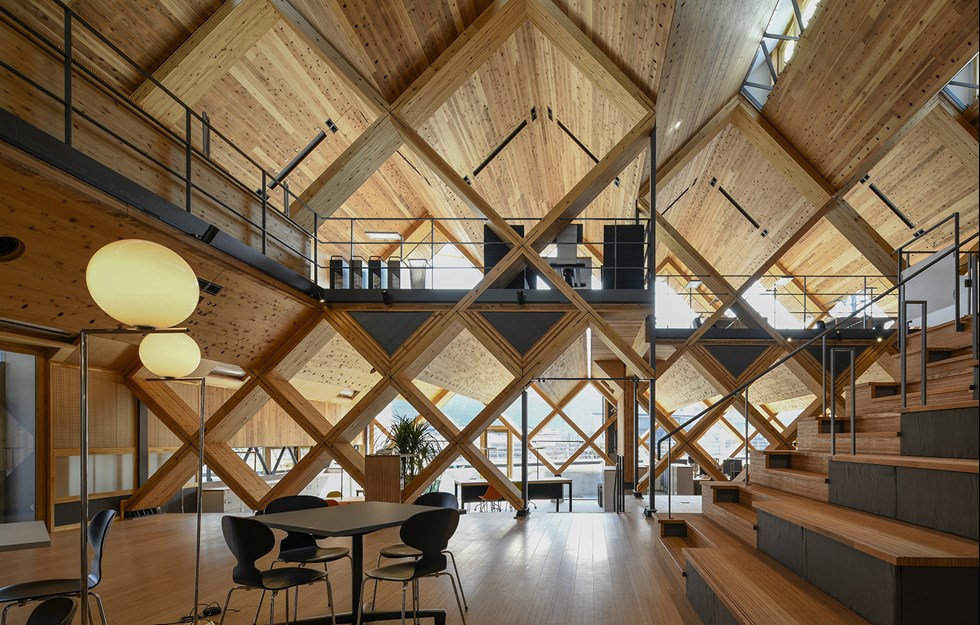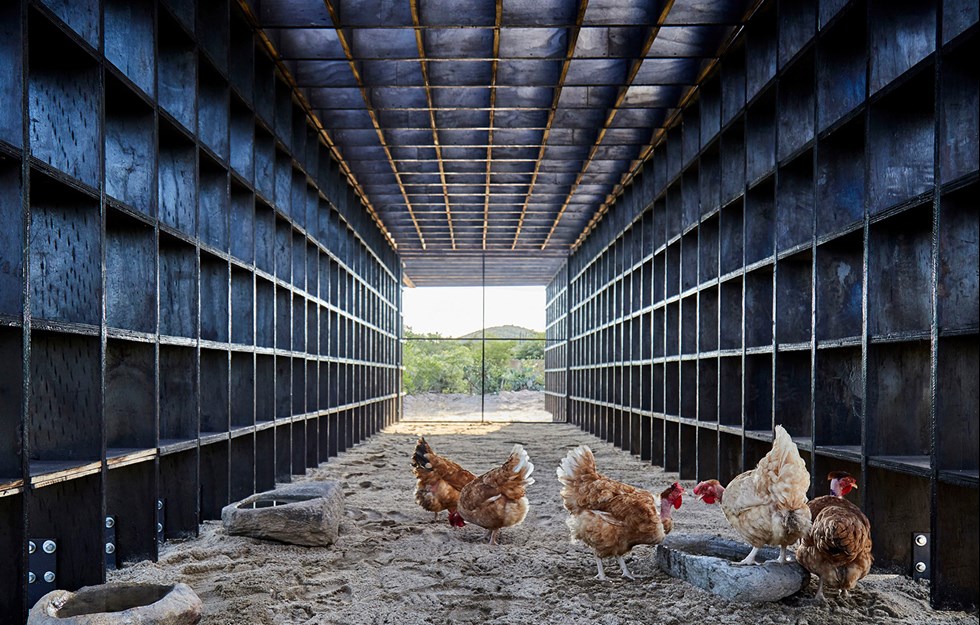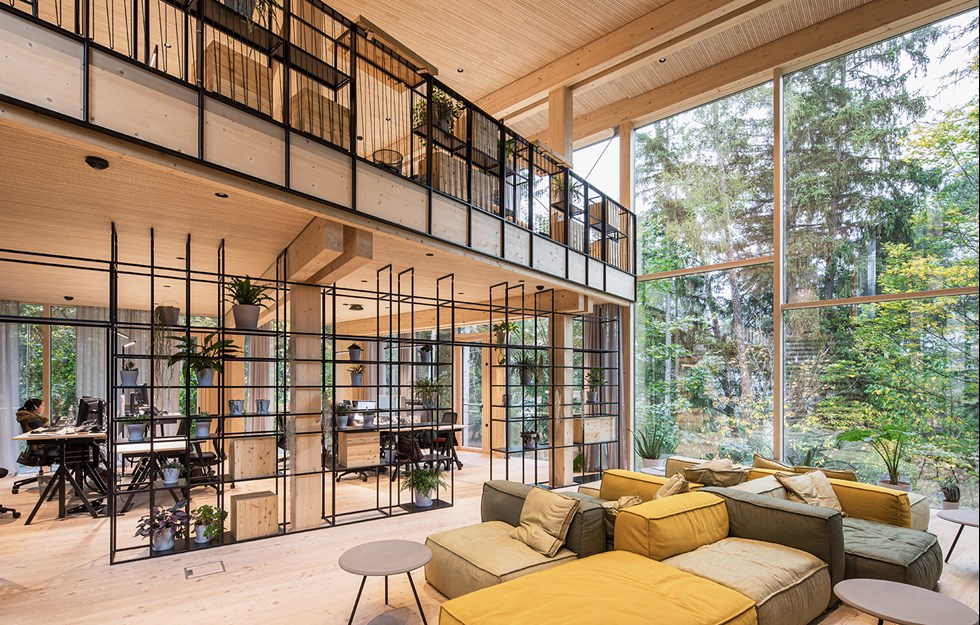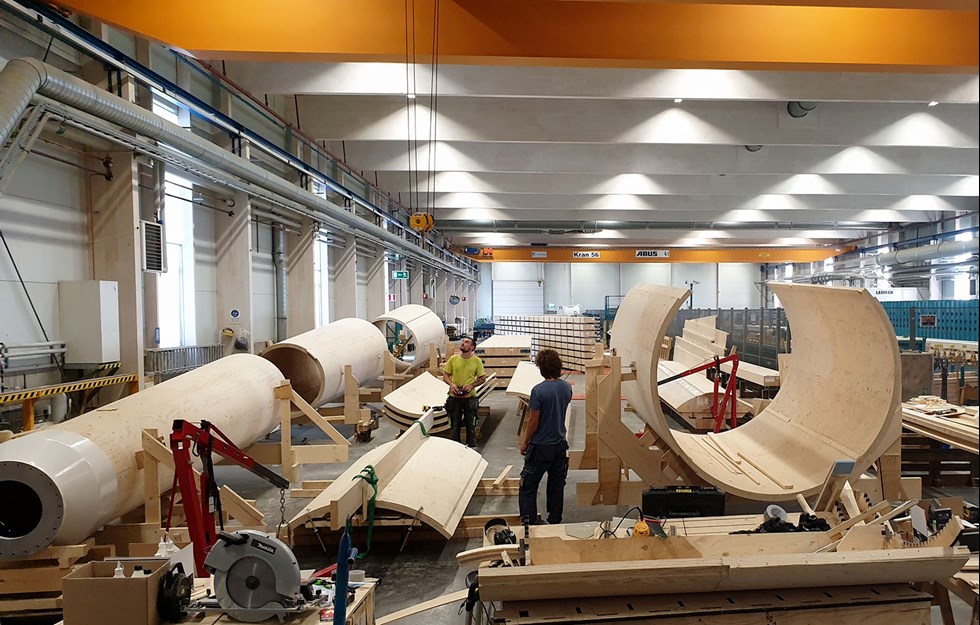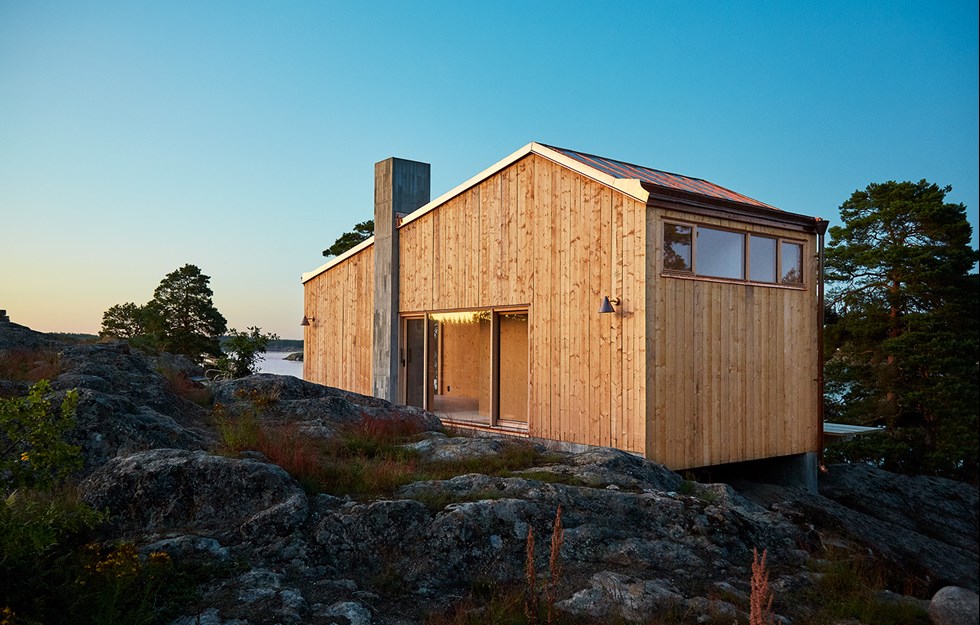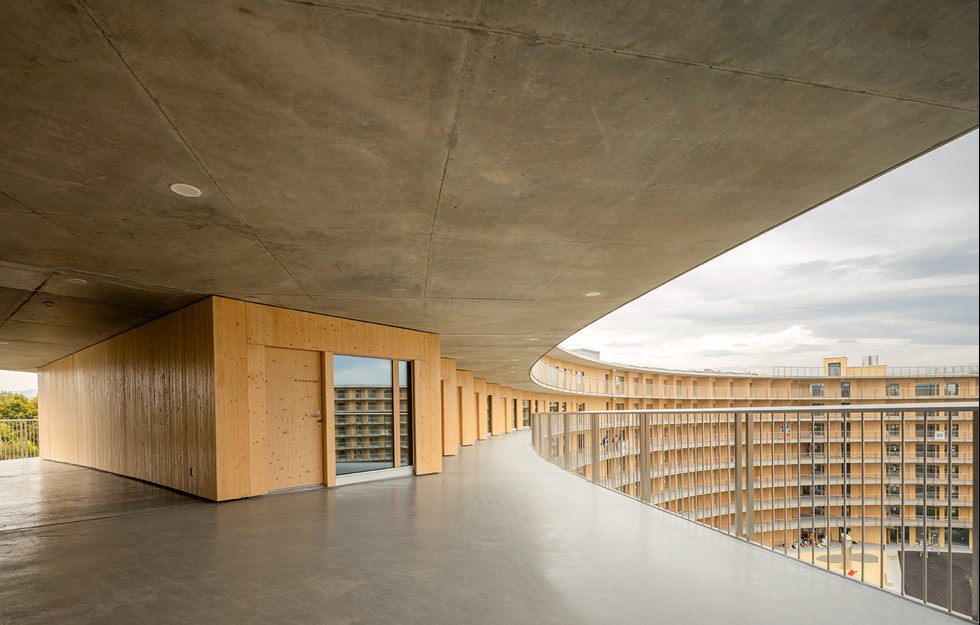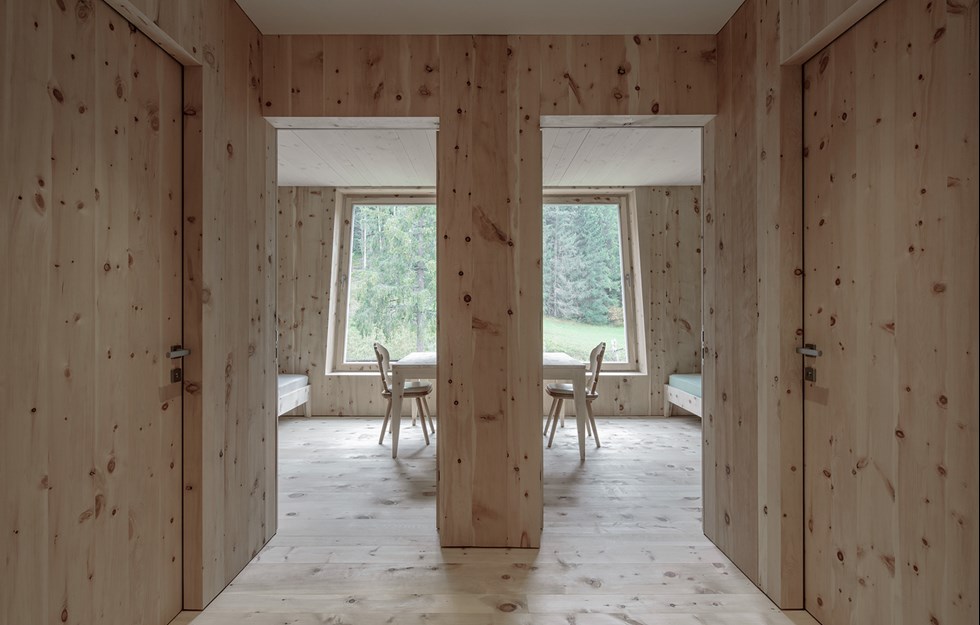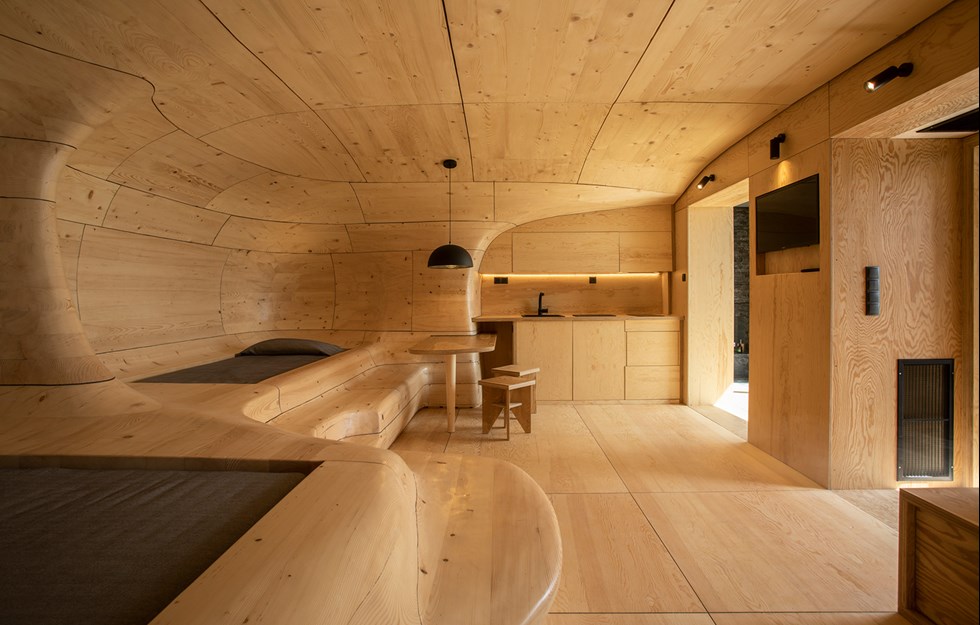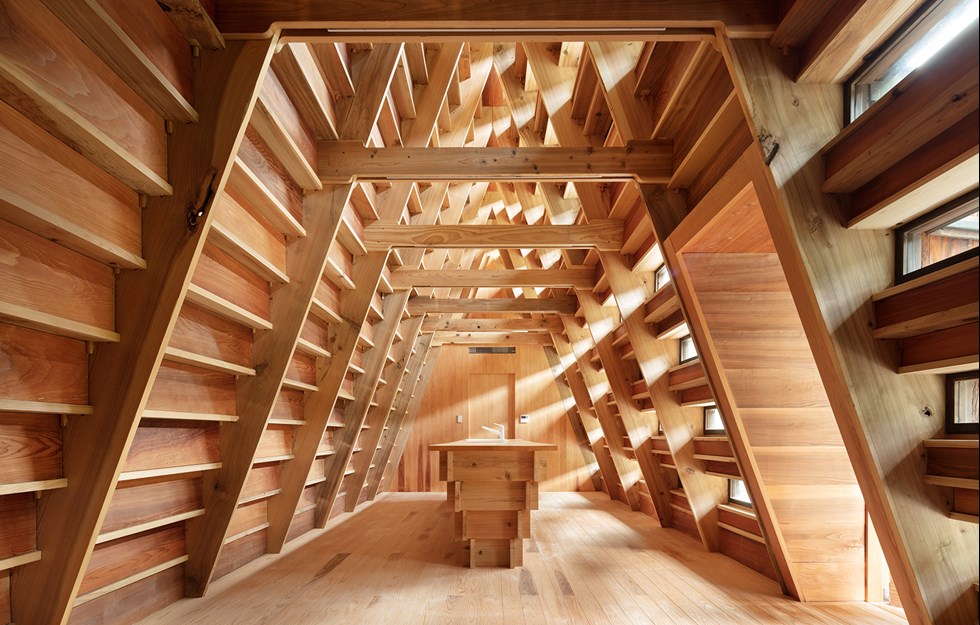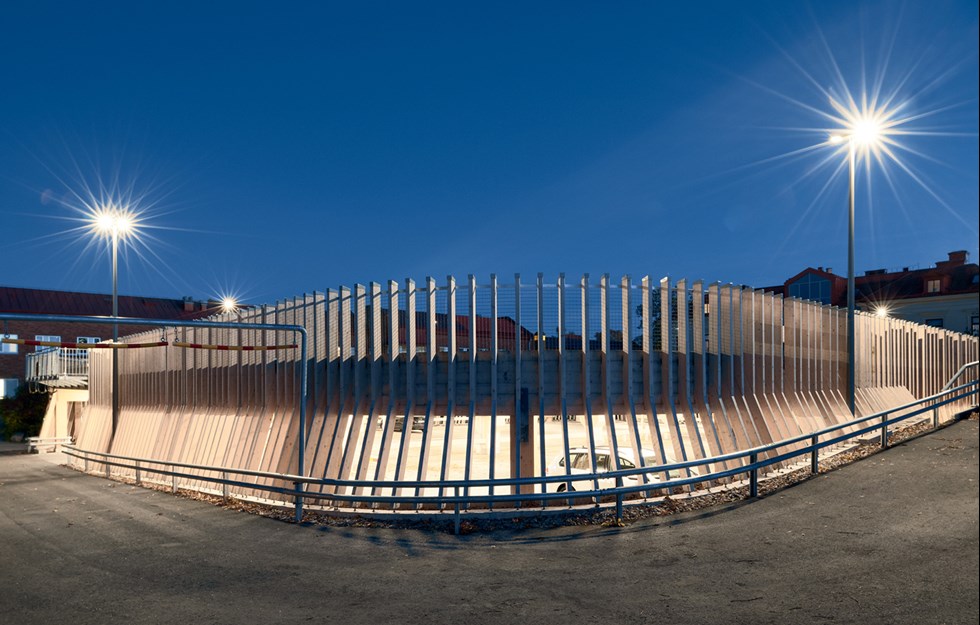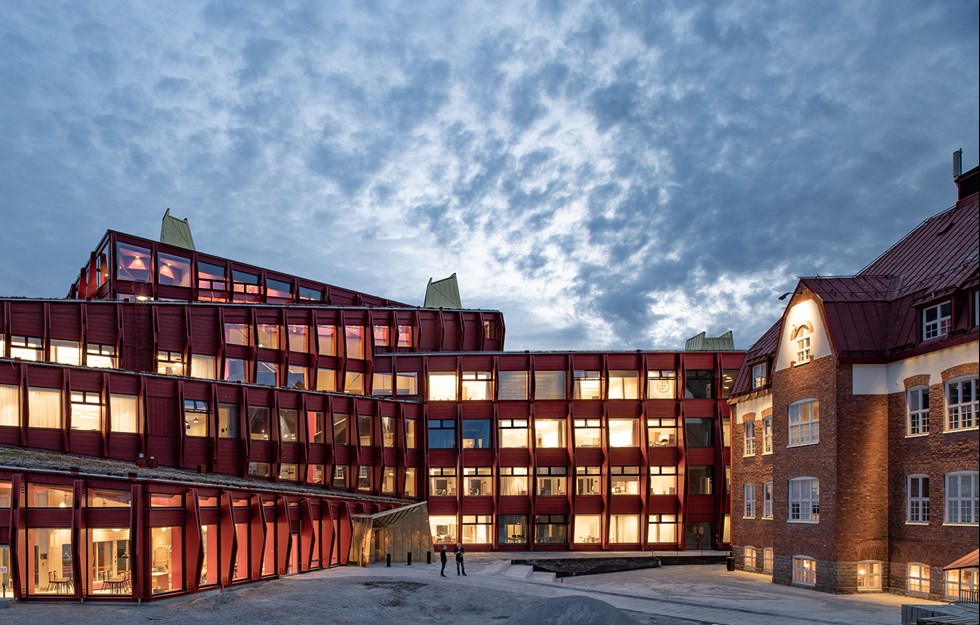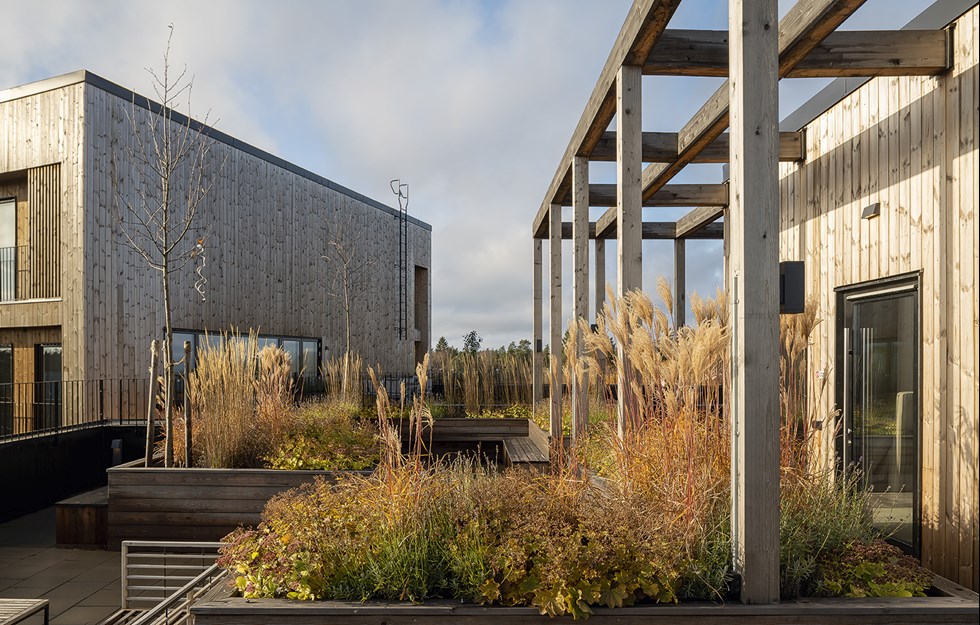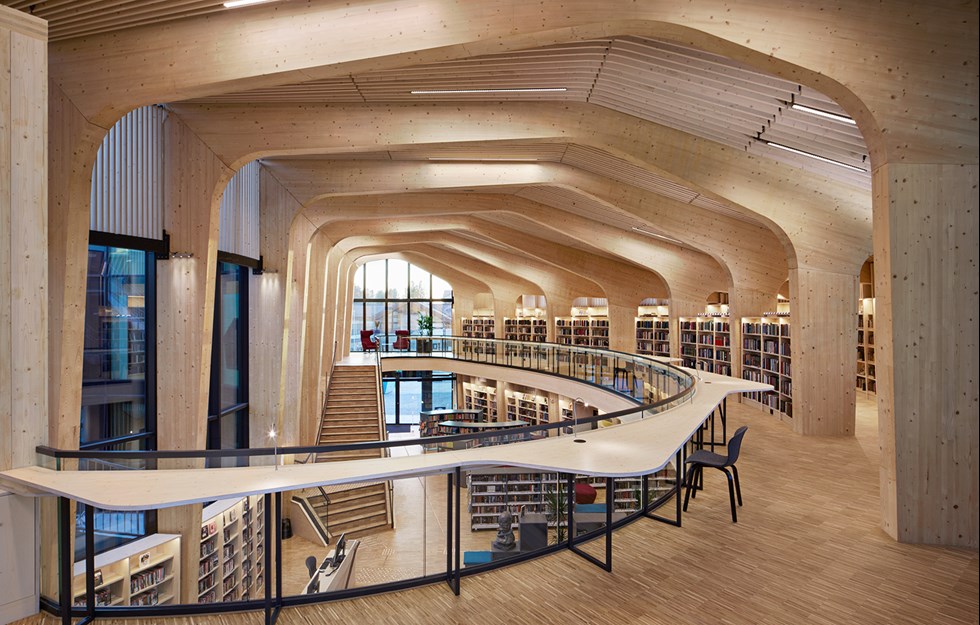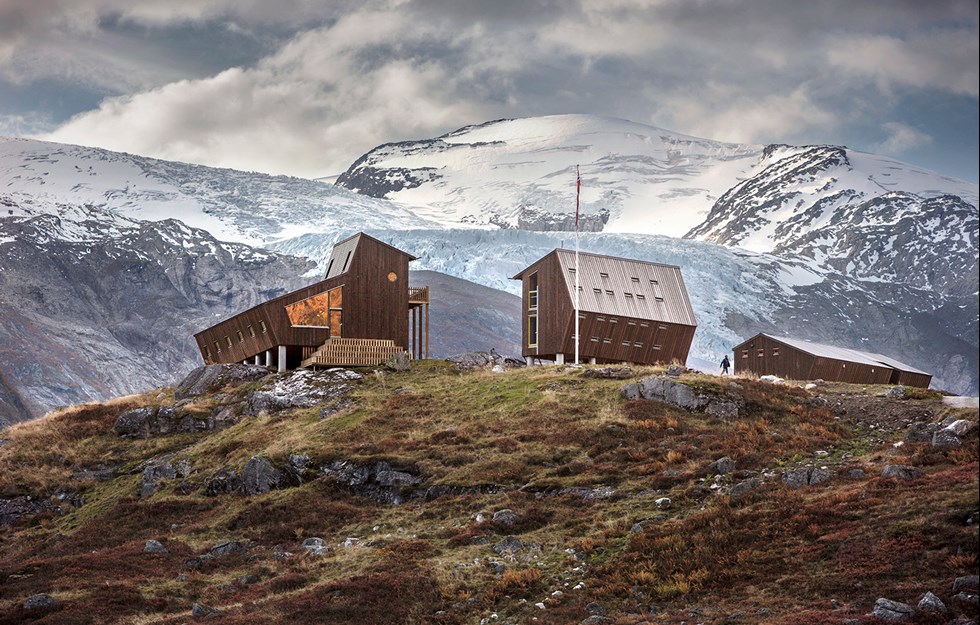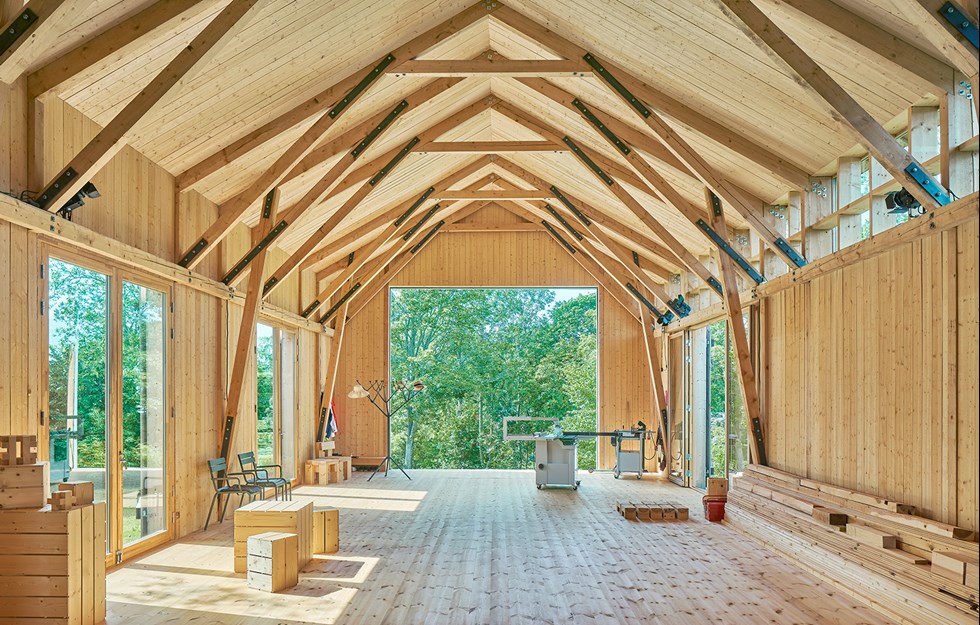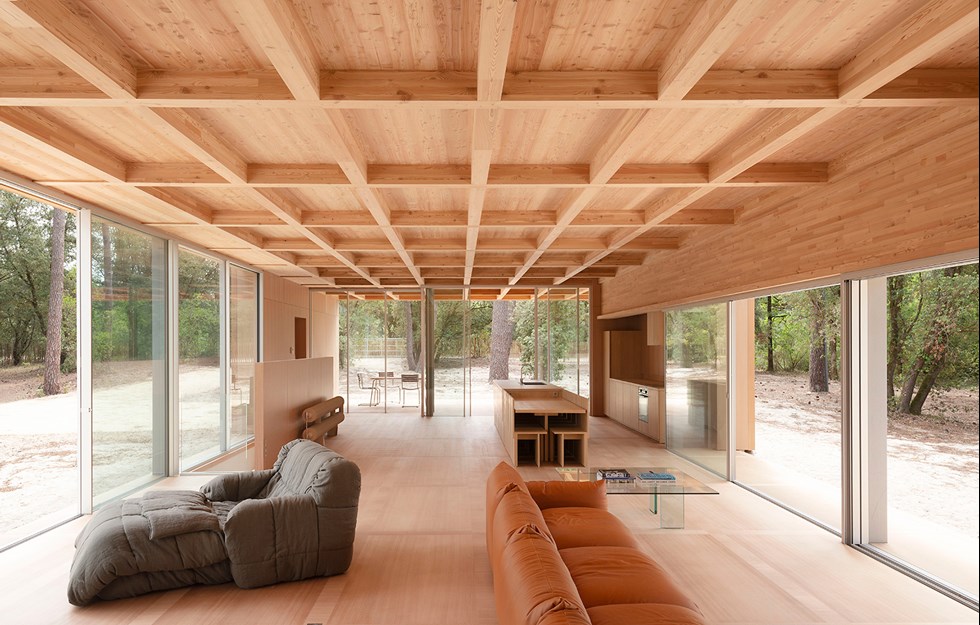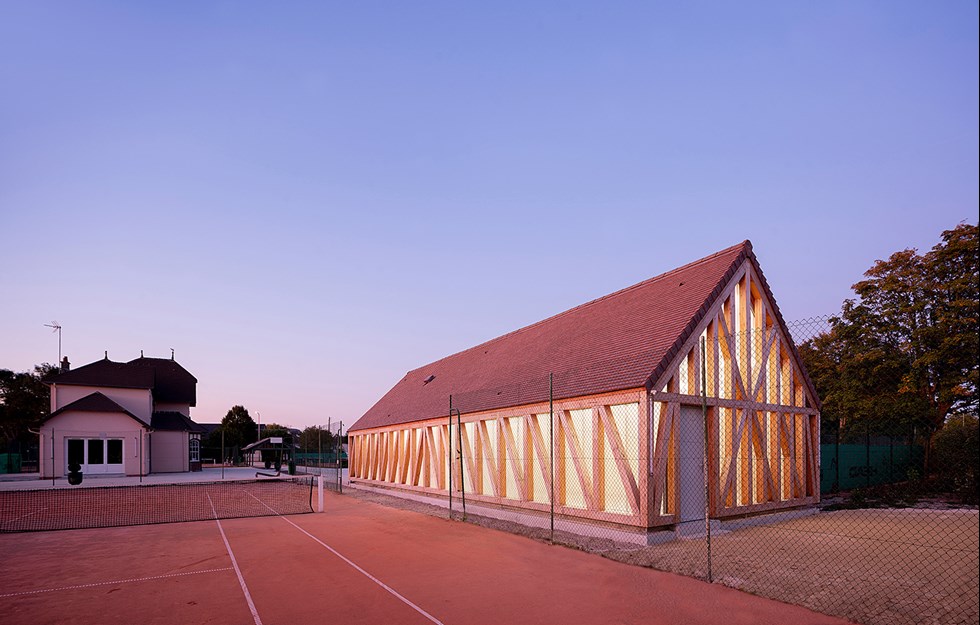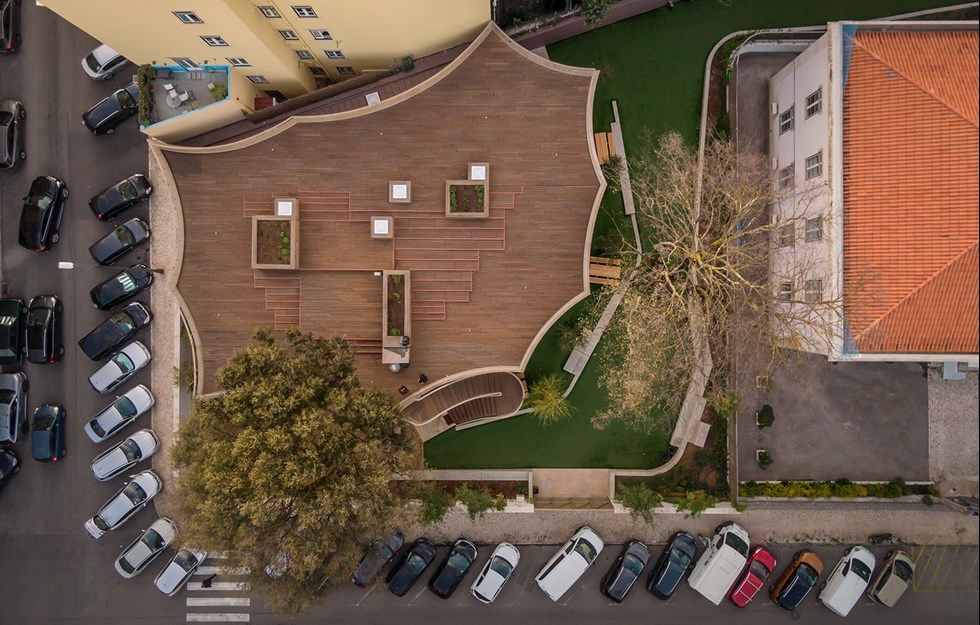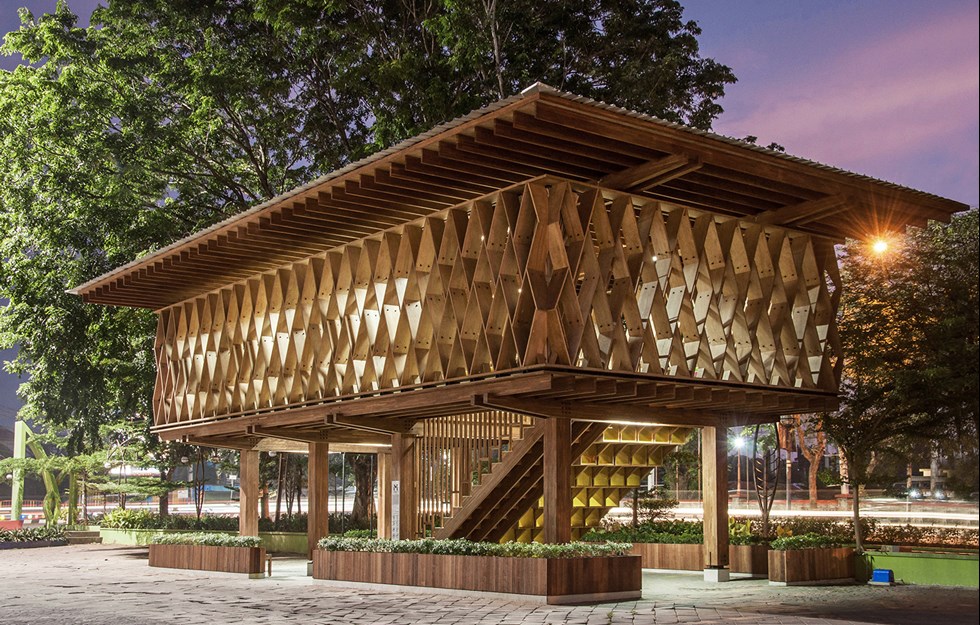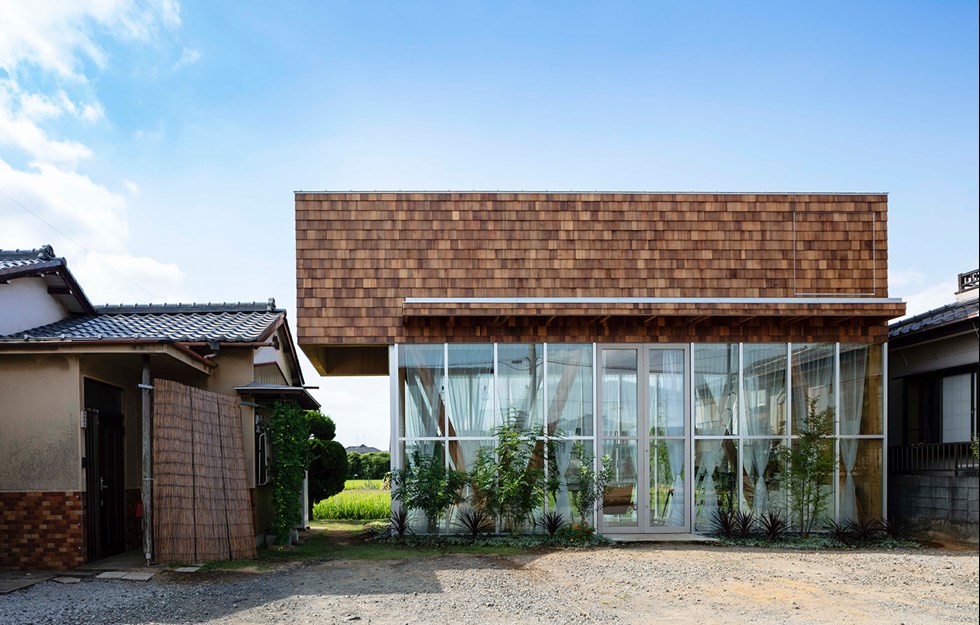The Japanese practice Camp Design Inc. conducts various renovation projects for property company Ribita. Usually they overhaul empty buildings and create a new use for them, as is the case with “The House Between the Pillars”. Traditional Japanese building techniques are based on a modular measure of 1,820 millimetres. In old buildings, for example, this was the centre spacing for pillars.
The architects imagined that a family with children would live in the house and that they would want flexible living with the option to change things around. Wooden tracks are suspended between the pillars to support various elements, both static and sliding. Corresponding tracks also run along slightly raised sections in the floor. Sliding walls, shelves and furniture systems have been designed to be placed anywhere in these tracks, as desired. The furnishing is thus driven by the residents’ needs.
The house also has an intermediate space, a non-changing room that nevertheless changes character when the surrounding rooms are rearranged. A house that embraces tradition, while adapting it to modern technology and the requirements of contemporary living.
Read more at camp-archi.com









